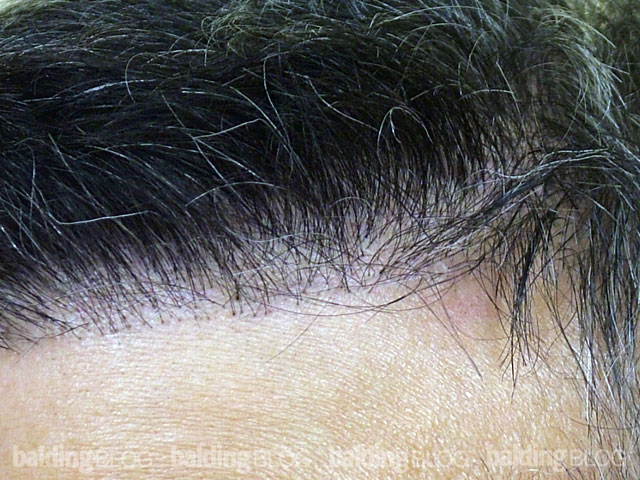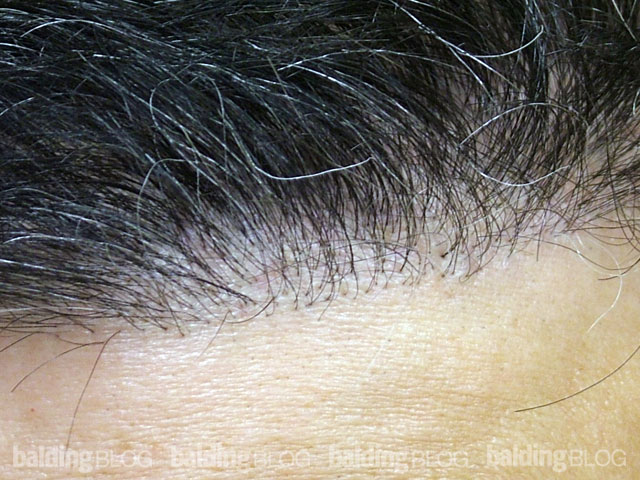A Perfectionist’s View of Transplants
I am 50 with early gray coming on the sides and black hair in the front. I have had 10 hair transplant procedures over the past 8 years [not at NHI]. I go from happy about them (when I had bald areas and then they went away) to unhappy (now). I am bothered about my left frontal hairline in particular. It is obvious to me that it is transplanted. I am not an expert, but I know it is not right, yet it is not the pluggy look like your book shows in the back section. I comb my hair forward to cover the hairline which I should be showing off, not hiding. What is wrong with it and can it be fixed with 100% certainty?


It is clear that you are a perfectionist, for only a perfectionist would notice your problem. The problems are that the grafts in the frontal line are two hairs each, the hair seems to point outwardly, rather than forward and the frontal grafts are a straight line that line up like soldiers. These two problems are not uncommon when a transition zone of single hairs is not created at the leading edge of the hair line. The concept of a hair line should not be taken literally, for there is no ‘line’ in a natural hair line. You were created with a zone of single hairs that transition from a bald forehead to a full frontal hairline presentation. A good hair transplant doctor must create the same transition zone to accomplish the natural look. With your black hair, these changes are more noticeable than if your hair color was lighter, making it easier to detect a transplant. As the gray hair moves forward, the problem will become less noticeable, but I suspect that you do not want to wait a decade or more for that to happen.
The second problem is outward directional growth of the transplanted hair. Judging from your photos, that problem is the result of a radial placement of some of the recipient sites when the procedure was first done. The direction of the hair growth is totally controlled by the surgeon who made the recepient sites. Additional grafts placed in a better position and direction might influence the hair that is growing outwardly. Using the concept of ‘following the crowd’, the normal direction of the new hair can be transplanted to influence how the existing hair will lay.
The third problem is the ‘line-up’ of the hairs in a straight line that is easily detected. The frontal hairs should be irregularly placed so that no line is evident.
The last point of your question talks about certainty in outcomes. Any surgical procedure has risks of failure, so certainty in medicine is more an act of God than an act of a doctor. In my experience, the success rate for building a good transition zone is very, very high. The hope would be to complete the transition zone in one session with 500-600 single hairs in the front. Sometimes more is needed, particularly if your hair is coarse, black and straight. What you need is comfort and that is established with a visit to the doctor’s office. As a perfectionist, you will interview your potential new doctor with an open mind, but keeping some skepticism and doubt, so the doctor will have an uphill battle for your confidence. Ask the doctor to show you people he has done with black hair, you can look at the transition zone and see if you see a ‘line’ in the hairline. I always say, what you see is what you are ‘gonna’ get.

Reader Comments0
Share this entry
Leave a Comment
Want to join the discussion? Feel free to contribute! Note: We do not tolerate offensive language or personal attacks to other readers. Marketing links or commercial advertisements will be deleted.